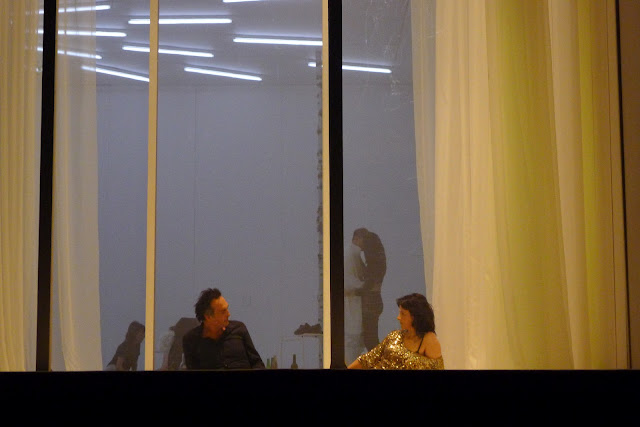The first time I set foot in the Barbican it instantly reminded me of the communist buildings back home, concrete monsters, with labyrinthian corridors, something out of a Kafka novel.
However the more I go there the more I learn to appreciate its utopian socialist architecture. It is both out-of-fashion and futuristic, almost awkward, surrounded by the modern glass skyscrapers of the City.
No wonder it was voted "London's ugliest building"in Grey London pole in September 2003, however it's considered one of the most fashionable places to live in the City. And the largest performing arts centre in Europe.
The saw-toothed Barbican towers were the tallest residential buildings in Europe at the time they were built in the 60s.
 The Barbican concrete estate, inspired by the Brutalism architectural style in the 50s.
The Barbican concrete estate, inspired by the Brutalism architectural style in the 50s. Guildhall School of Music and Drama, with its brick boxes used as practice rooms, moved to the Barbican in 1977.
Guildhall School of Music and Drama, with its brick boxes used as practice rooms, moved to the Barbican in 1977. One of the few suspended walkways or "ped-ways" in the Barbican. Initially planned in the 50s as a 50km elevated pedestrian system across the whole City, the project was soon abandoned and only a few remain today.
One of the few suspended walkways or "ped-ways" in the Barbican. Initially planned in the 50s as a 50km elevated pedestrian system across the whole City, the project was soon abandoned and only a few remain today. Juliette Binoche and Nicolas Bouchaud in Mademoiselle Julie @ the Barbican
Juliette Binoche and Nicolas Bouchaud in Mademoiselle Julie @ the Barbican






